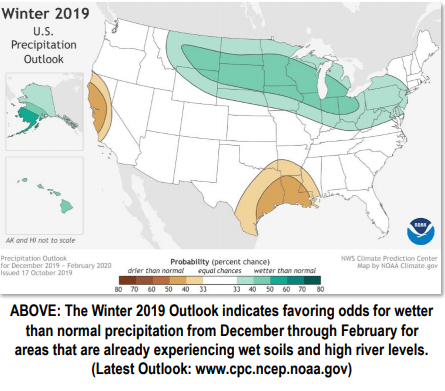
Wet soils and high river levels in eastern Iowa have brought concerns of flooding this coming spring. According to the National Weather Service, there are seven factors that contribute to spring flooding and two have already occurred: high river levels going into winter, and high soil moisture going into winter. The NWS states staff will measure these factors over the next couple of months to determine if the flood threat this spring will be increased or decreased. Current high streamflow, water levels, and abnormally wet soil suggest the following potential impacts: rivers freezing at high levels, widespread ice jams, agricultural impacts, and widespread flooding in the spring.
The official outlook suggests a wetter than normal December through February across much of the Upper Mississippi River basin. At this time, the winter outlook confidence is low to moderate with this season not having El Nino or La Nina conditions in place. This winter will have short-term climate patterns which may result in “large swings in temperatures and precipitation,” according to deputy director of NOAA’s Climate Prediction Center Mike Halpert. The first probabilistic spring flood outlook for 2020 will be published February 13th.

